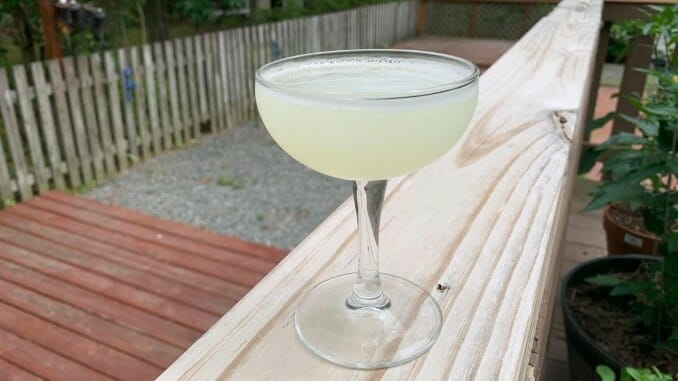Cocktail Spotlight: Hemingway Daiquiri

Cocktail Queries is a Paste series that examines and answers basic, common questions that drinkers may have about mixed drinks, cocktails and spirits. Check out every entry in the series to date.
I’ve always been fascinated by the way some drinks can have mythological origins that are endlessly repeated whenever that particular cocktail is mentioned or served. It illustrates the power of a good story, which so often trumps actual historical basis–if the story is more interesting, then reality often has little chance. Look no further than something like India pale ale in the beer world, in which the “ships to India” story is still repeated all across the industry despite historians like Martyn Cornell providing reams of evidence to counter it. Turns out, a more complex story just isn’t as repeatable. And the same thing often happens when you bring up the well-loved Hemingway Daiquiri.
The classic origin story for the Hemingway Daiquiri does involve the bar that really did invent it, and the same place that lays claim to having created the frozen daiquiri in the first place: Havana, Cuba’s El Floridita. It’s the description of the drink itself that is somewhat absurd: Author Ernest Hemingway, according to the legend, is said to have tasted a daiquiri at the establishment and then asked for one for himself with “no sugar and double the rum.” The resulting drink is then said to have lived on as a menu staple as the “Papa Doble,” today also referred to as the Hemingway Special, El Floridita #4, or just the Heminway Daiquiri.
The only problem? A daiquiri made with “no sugar” and “double the rum” is an absolutely terrible drink, one that almost no cocktail enthusiast would enjoy or want to consume. Without the simple syrup or sugar used in the traditional daiquiri recipe, and with extra spirit, the result will be unpalatably dry, tart, potent and harsh. Hemingway may have known a thing or two about crafting a novel, but if that was really his order then he presumably didn’t know much–or care much–about recipe construction, and just wanted to get loaded more efficiently. Regardless, this apocryphal recipe overlooks the function of sugar in a drink like this, which is to elevate the other ingredients and bring out their natural flavors, much in the way salt does this with our food.
And it’s because the “Papa Doble,” as described, is such a bad drink that no one actually makes the Hemingway Daiquiri that way today. The one thing that conceptually carries over is that the Hemingway Daiquiri is traditionally on the dry side, because it gets most of its sweetness from the addition of maraschino liqueur rather than simple syrup, while also adding in grapefruit juice in addition to lime for some citrus complexity. This recipe is the version we make today:
— 2 oz unaged or lightly aged column still rum
— .5 oz maraschino liqueur
— .75 oz lime juice
— .5 oz grapefruit juice
— .25 to .5 oz simple syrup (optional)
Combine all ingredients in a cocktail shaker/tin with plenty of ice. Shake thoroughly to chill and dilute, and strain into a cocktail glass or coupe, optionally garnished with lime wedge, grapefruit peel or a maraschino cherry.
Now, you have some options here when it comes to tailoring the Hemingway Daiquiri to your particular taste. You can alter the amount of rum, for one, in the range of 1.5 oz to 2 oz. You can bump up the grapefruit a bit, or reduce the lime. The biggest question to answer, though, is whether you want the additional simple syrup in the drink.
Without the simple syrup, this daiquiri is definitely on the dry and crisp side. The maraschino liqueur (you’re probably using Luxardo) provides some sweetness, but that sweetness is balanced by delicate herbal bitterness and nuttiness of cherry pits. This makes for a Hemingway Daiquiri that is elegant, tart and bittersweet, a good option for those who like their daiquiris to verge on the more dry side.
Personally, I still like to add at least a tiny amount of simple syrup in this drink, which gives it a fuller texture and brings out more of the rounded fruitiness of the lime and cherry liqueur. You may find that this version, with the additional simple syrup, makes for a more universally accessible version of the drink, and it still doesn’t really read as “sweet” per se.
As if there wasn’t enough confusion here, we should note that there actually is another layer of historical weirdness present to this recipe: You will sometimes see recipes for the Hemingway Daiquiri that go out of their way to specify making the drink with lemon juice rather than lime. What? A daiquiri with lemon? As it turns out, this is likely the result of several printing mix-ups that published variations of this recipe in the U.S. for decades before being corrected, stemming from the fact that the Cuban Spanish word for both lime and lemon is “limon.” A lime, meanwhile, is “limon verde,” a distinction that is still sometimes missed. Compounding matters are sources like the official El Floridita website, whose online menu specifically and confusingly says “lemon juice” in every drink. Can we safely assume that this is the result of Google translation making an error? If anyone reading this has been to Cuba and can verify, that would be nice.
Regardless, however you make this cocktail, the Hemingway Daiquiri stands out as one of those premier “summer drinks” that is extra satisfying when temperatures rise and sweat starts to bead. If you’ve never made one at home before, your next backyard BBQ is the perfect time to bust it out.
Jim Vorel is a Paste staff writer and resident beer and liquor geek. You can follow him on Twitter for more drink writing.







































